corzetti stampati, an old and regal pasta from genoa
with seared mushrooms, marjoram, pine nuts & qb cucina
I love Ligurian food.
Ligurian flavors are, typically, light and refreshing—think basil pesto and focaccia, of course, but also vegetables and herbs, citrus, fish, and olives—and just hearing the name “Liguria” brings back fond memories of sun-drenched lunches overlooking the sea. And yet, although the Italian Riviera evokes glamour and romance, much of the region’s food is also firmly rooted in the tenets of la cucina povera (“poor cooking” or “poor kitchen”), in which meat is spare and waste is not an option. Ingredients are often recycled in clever ways and flavor comes from a few key enhancers like anchovies and salt cod, dried mushrooms, and aged cheeses. In the mountains, you’ll come across hallmarks of la cucina bianca (“white cuisine”), named aptly for the color of many local dishes like salsa di noci (walnut sauce).
When it comes to pasta, you’re likely to find hand-fashioned spirals called trofie; herbaceous pot-bellied ravioli known as pansotti; linguine-like trenette; delicate fazzoletti di seta (“silk handkerchiefs”); potato, cheese, and mint-stuffed turle; and a pasta called corzetti (or croxetti). There are a few variations of corzetti, but the most popular version are the embossed pasta medallions of Genoa. This pasta is old, dating back to the 13th century, and it’s likely that it was first created using metal coins—a true symbol of affluence—and later, during the Renaissance, some say, bore noble coats of arms (this might very well be a myth). Today, elaborate (often custom) wooden stamps are pressed into soft circles of dough, resulting in pasta that’s delicious and beautiful in equal measure.
I’ve made this style of corzetti (corzetti stampati) many times, but I first fell in love with it when I made it alongside Genoese food writer Enrica Monzani. The dough in this recipe—a chewy and fragrant combination of soft wheat flour, eggs, water, and white wine—is the one I learned from Enrica, and I’ll rarely make corzetti with anything else. (By the way, Enrica’s coming out with a new cookbook, Liguria in Cucina, on April 1 and I can’t wait to get my hands on it!)
As for the stamp, I’ve collected a few over the years, and the one featured here is the newest addition. It’s from qb cucina, my go-to destination for almost all of my pasta tools, Italian kitchen accessories (like these popular phrase bowls), and recipe inspiration. I discovered the brand when I was searching for a nearly impossible-to-find tool called a ferretto—a long, square-shaped metal rod used to make a Sicilian pasta called busiate, among other shapes—and qb cucina was the only place sourcing them straight from Italy. Since then, qb’s founder, Sarah Ubertaccio, and I have struck up a friendship and qb has transformed from a niche pasta tools seller into a burgeoning community with recipes, cooking tips, a cookbook club, and more.
When Sarah and I discussed this recipe collaboration, she threw out the idea of pairing corzetti with mushrooms, an ingredient that hadn’t received its due attention in qb’s repertoire. I didn’t want to stray too far from this pasta’s traditional condiment of olive oil, pine nuts, and fresh marjoram, so I kept those core ingredients while adding a handful of seared wild mushrooms to the mix. To my delight, the mushrooms brought exciting body and texture to this dish, not to mention a warm earthiness that made for perfect comfort food—I know I’ll be adding them to my corzetti for many winters to come. Just remember (always, but especially for this recipe): save your pasta cooking water. It’s the key to transforming the chopped nuts and herbs into a luscious, creamy sauce.
Corzetti with Seared Mushrooms, Marjoram & Pine Nuts
Serves 2 to 4
For the pasta
300 grams (about 2 cups) ‘00’ pasta flour or all-purpose flour
50 grams (1 large) egg
50 ml (a scant ¼ cup) water
50 ml (a scant ¼ cup) dry white wine
For the sauce
50 grams (½ cup) raw walnuts
35 grams (a generous ¼ cup) pine nuts, plus more for serving
60 grams (4 tablespoons) unsalted butter, divided
90 ml (2 tablespoons plus ¼ cup) extra-virgin olive oil, divided
2 large garlic cloves, peeled and crushed
225 grams (8 ounces) mixed mushrooms like oyster, maitake, chanterelle, and king trumpet, cleaned and sliced or torn into bite-sized pieces
Kosher salt and freshly ground black pepper
1 tablespoon fresh marjoram or oregano leaves, plus more for serving
30 grams (1 ounce) finely grated Parmigiano-Reggiano, divided, plus more for serving
Equipment
Work surface, preferably wooden (a cutting board works great)
Pasta machine or rolling pin
Corzetti stamp
For the pasta
Make the dough:
Make the pasta dough by hand (see instructions for the “well method”) and knead it vigorously until smooth and firm, about 10 minutes. Alternatively, add the flour, egg, water, and wine to a food processor fitted with a steel blade. Pulse in a few brief increments until the ingredients are evenly distributed and couscous-like beads of dough form (the mixture should come together easily when pressed). Transfer the dough to a work surface and knead for 5 to 10 minutes, until the dough is smooth and homogeneous.
Wrap the dough tightly in plastic wrap and let it rest at room temperature for 30 minutes or up to 2 hours. If you plan to roll the dough with a rolling pin, let it rest for at least 1 hour.
Set up your workspace:
Dust a sheet pan with semolina flour or line it with parchment paper or a dry dishcloth. Gather your tools and set up your pasta machine if you plan to use one.
Roll the pasta sheets:
Cut off a third of the dough and re-wrap the rest. On your work surface, flatten the section of dough with your palm into an oval-shaped pancake that’s about ¼-inch thick. Press the dough between your fingers to thin it out as needed. If it feels tacky, dust the dough with some ‘00’ or all-purpose flour.
Set your pasta machine to its widest setting. Position one tapered end of the oval in the center and roll it through once—you should be left with a longer, thinner oval.
Position the dough lengthwise on your work surface. Then fold the two tapered ends into the center like an envelope so the length is the same or similar to the slot of the pasta roller (about 6 inches; it doesn’t matter if the tapered ends overlap or if there’s space between them). Flatten the dough again with your palm/fingers so it’ll go through the machine easily.
Line up the bottom edge of the pasta envelope with the edge of the machine (the folded ends should run horizontally). Roll the dough through the machine on the same (widest) setting a second time—you should be left with a rectangular-ish piece of dough (it’s okay if the ends aren’t perfect!).
Continue rolling the dough through the machine one time on each progressive setting until you have a semi-thin sheet—on both a Marcato Atlas 150 and KitchenAid machine, I roll the dough to setting 5. If the dough is at all sticky as it goes through the machine, or the sheet starts to tear on the surface, dust both sides with a little flour.
Alternatively, use a rolling pin to roll the section of dough into a sheet that’s about 2mm thick—don’t go crazy and do the best you can!
Cut the sheet into rounds:
If the sheet feels tacky, dust both sides with a bit of flour. Use the hollow cutter side of your corzetti stamp to cut as many rounds from the dough as you can. Ball up the scraps and re-wrap them—after all of the fresh dough is gone, you can re-roll the scrap ball to make more corzetti (any remaining scraps afterward can be cut into pieces and frozen for soup).
Stamp the dough:
Flip the corzetti stamp over so the patterned side is facing up and place a round of dough in the center. Align the other patterned piece of the corzetti stamp on top.
Press down firmly, sandwiching the dough between the pieces. Gently remove the round to reveal a beautifully printed medallion. If the pasta sticks to the stamp, dust the rounds or the stamp with a little more flour.
Arrange the finished corzetti in a single layer on the prepared sheet pan (if you’d like, stack the pieces by placing a sheet of parchment between each layer or dusting them with semolina). Repeat with the remaining rounds, and then the remaining dough.
Storage
To store the corzetti for future use, freeze the coins uncovered on the sheet pan until solid, about 25 minutes, then transfer them to a freezer bag and return to the freezer (they’ll last for up to 3 months). When ready to cook, boil the pasta straight from frozen—no need to thaw—and add an extra minute or two to the cook time.
For the sauce
Toast the nuts: Heat the oven to 375°F. Spread the walnuts and pine nuts on a small foil-lined sheet pan. Toast in the oven until golden and fragrant, watching closely, 8 to 10 minutes. Let cool.
Sear the mushrooms: In a large sauté pan or skillet, warm half of the butter and 2 tablespoons of the oil over medium heat. Add the garlic and cook, turning the cloves occasionally, until fragrant and golden, about 3 minutes. Remove the garlic and reserve.
Turn the heat to medium-high. Add the mushrooms and stir until they’re coated in butter/oil. Cook in a single layer, stirring occasionally but mostly leaving them undisturbed, until deeply golden, 7 to 10 minutes. Season with salt and pepper and transfer to a plate. Turn off the heat and set the pan aside (don’t wipe it out).
Make the pesto: In a food processor, combine the reserved garlic, toasted nuts, marjoram, and remaining ¼ cup oil. Pulse until the mixture is paste-like but still has some texture. Stir in half of the Parmigiano-Reggiano and season to taste.
For serving
Bring a large pot of water to a boil, then season it generously with salt. Add the corzetti to the pot, shaking off any excess flour before you do so, and cook until tender, 3 to 5 minutes (depending on thickness and drying time—always taste-test!).
While the pasta cooks, melt the remaining 2 tablespoons butter over medium-low heat in the pan used to cook the mushrooms. With a spider sieve or slotted spoon, transfer the pasta to the pan and toss briefly to coat in the butter (if you need to drain the pasta first, reserve at least 1 cup pasta cooking water).
Add the nut/marjoram mixture, mushrooms, and ¼ to ½ cup pasta cooking water to the pan. Cook over low heat until the sauce is creamy and the pasta is well coated, adding more cooking water as needed. Turn off the heat, add the remaining Parmigiano-Reggiano, and toss until combined. Adjust seasoning to taste.
Divide the pasta among plates and serve, topped with more marjoram, pine nuts, cheese, and a drizzle of olive oil if you’d like.




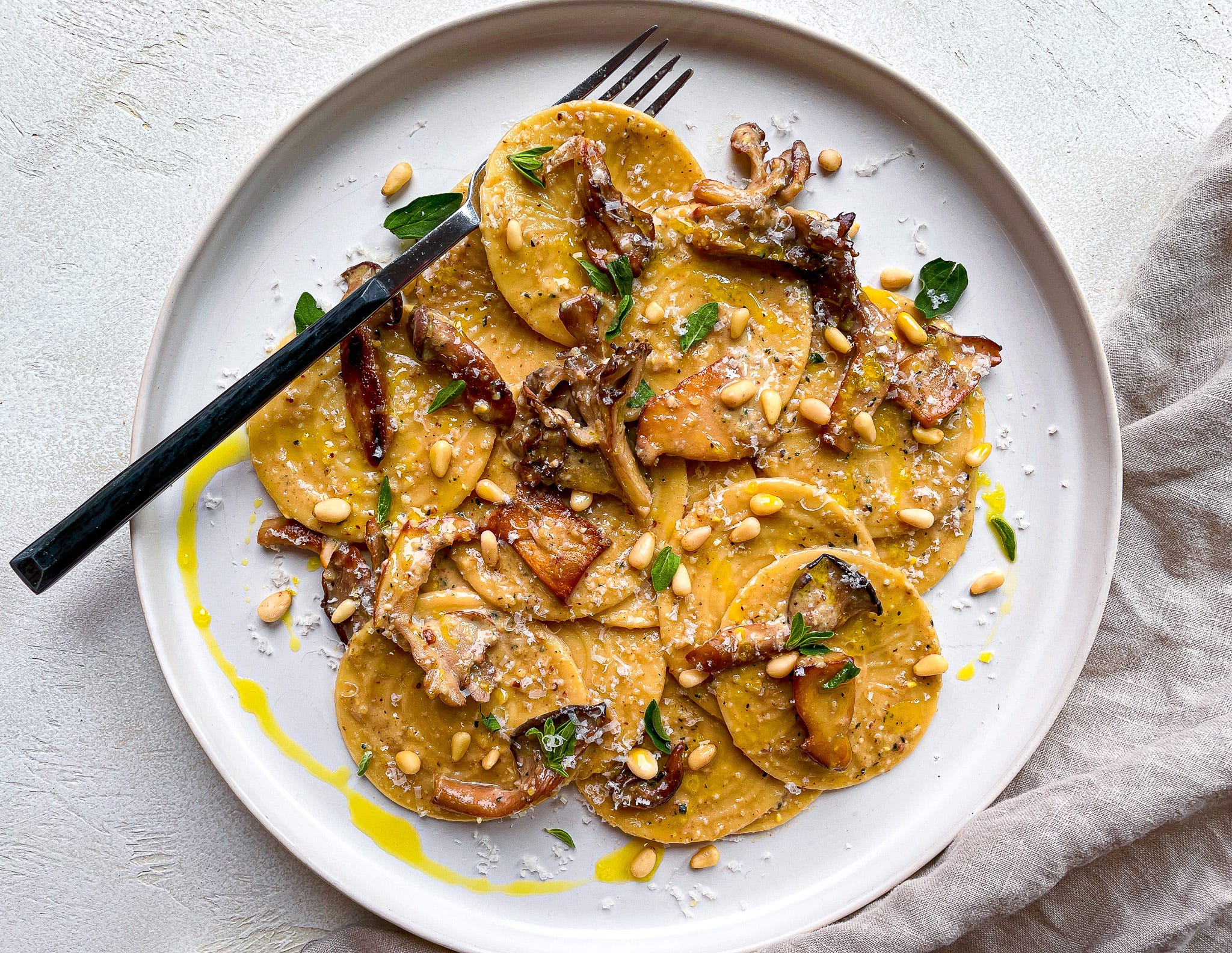
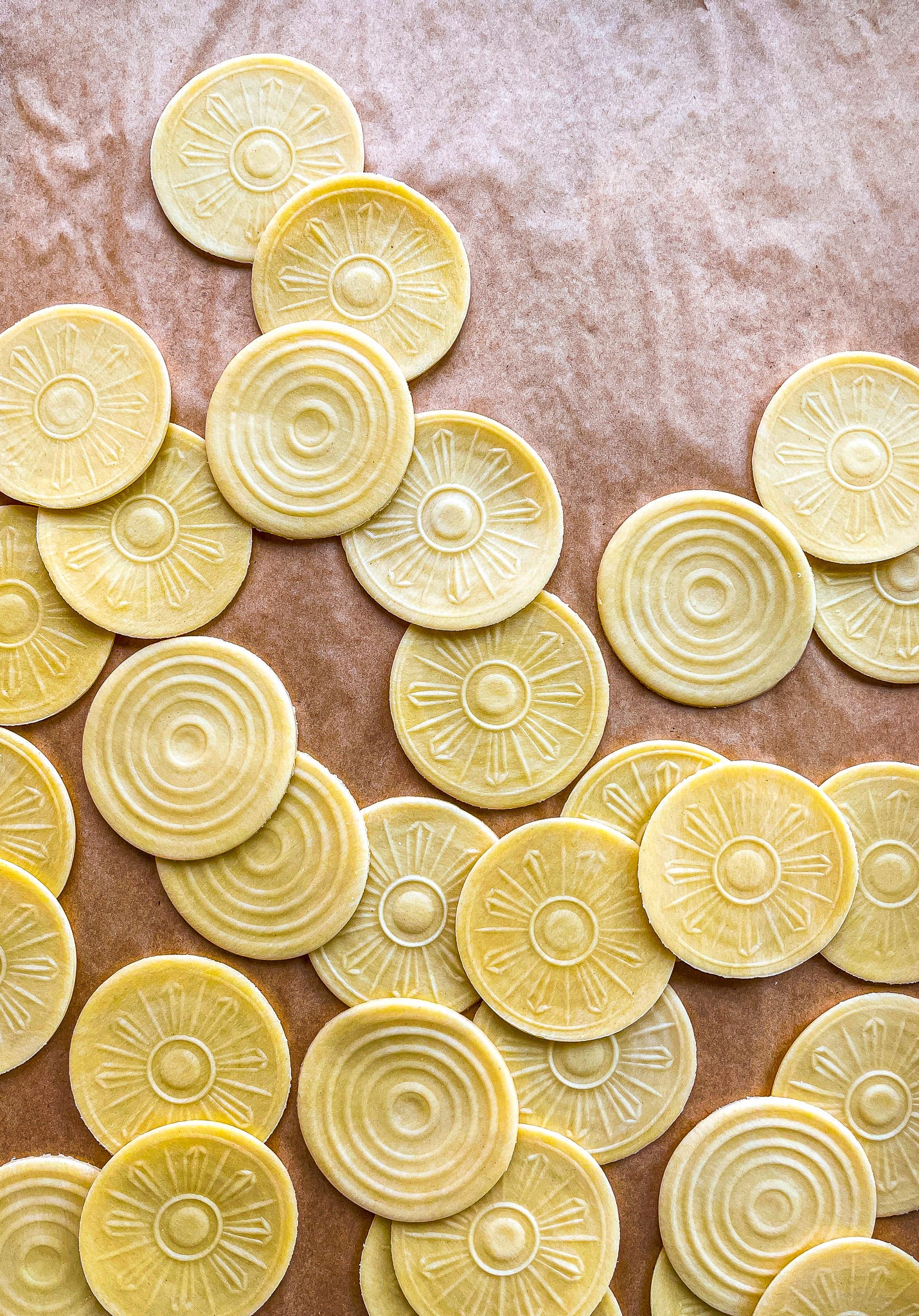
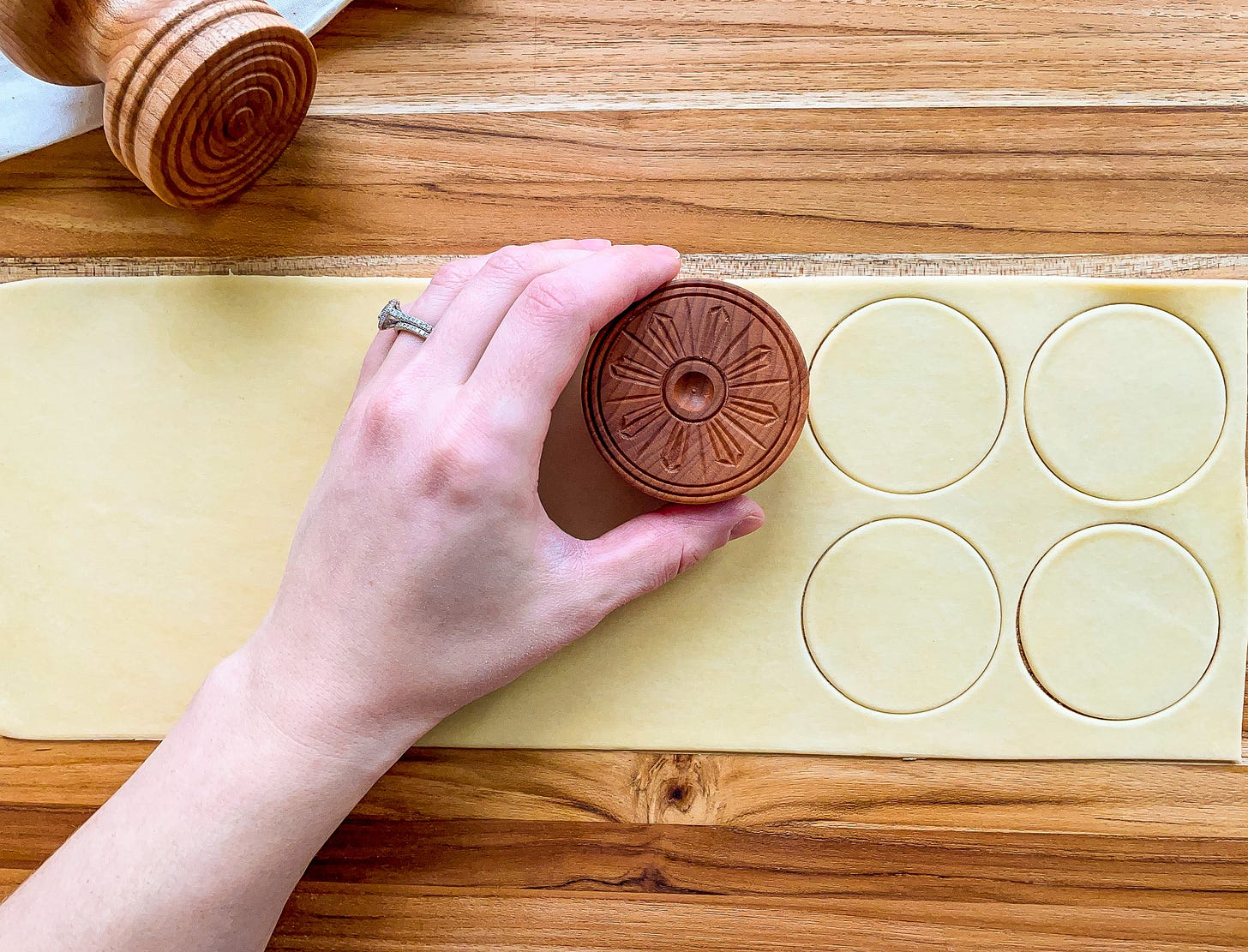
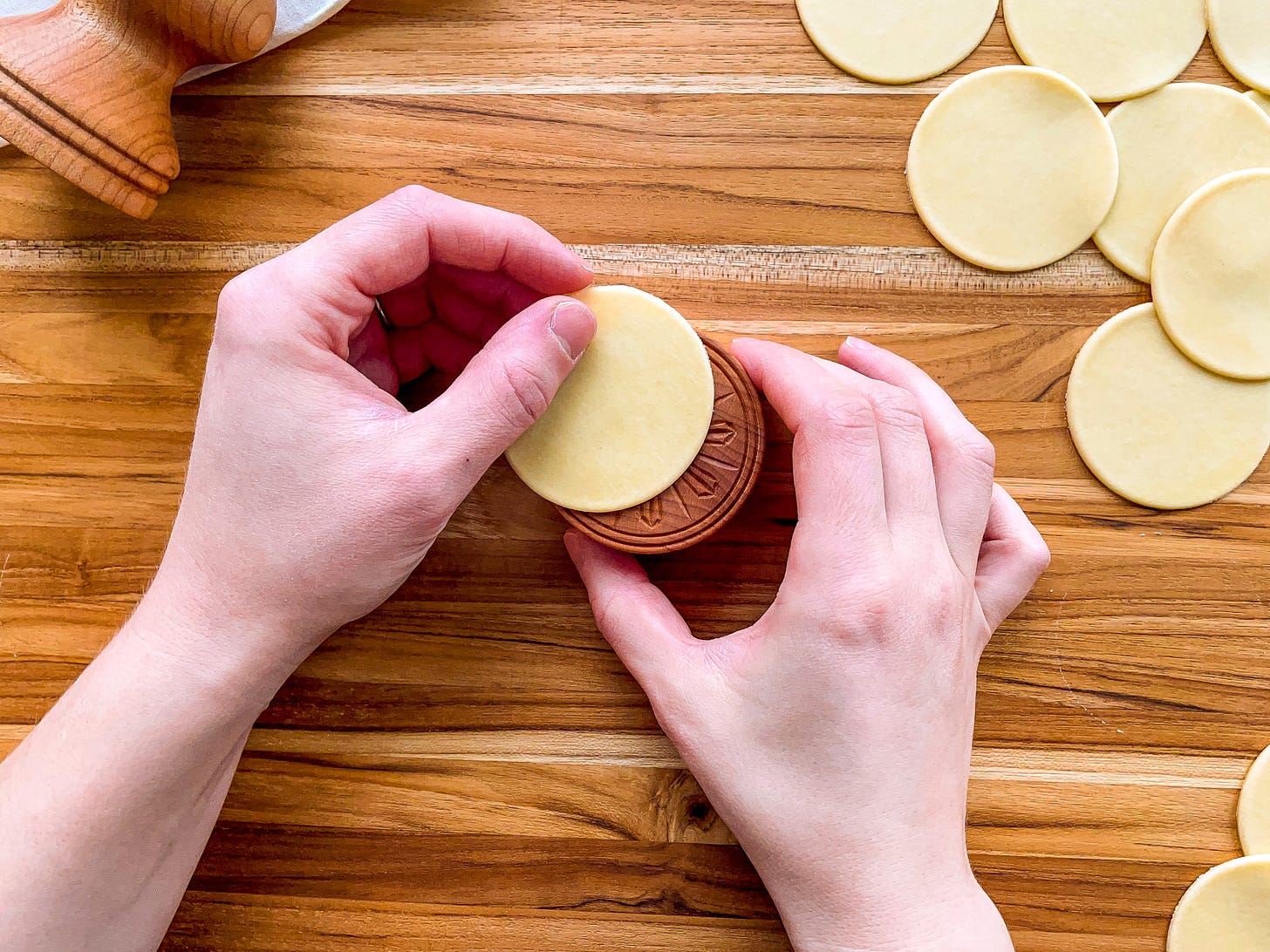

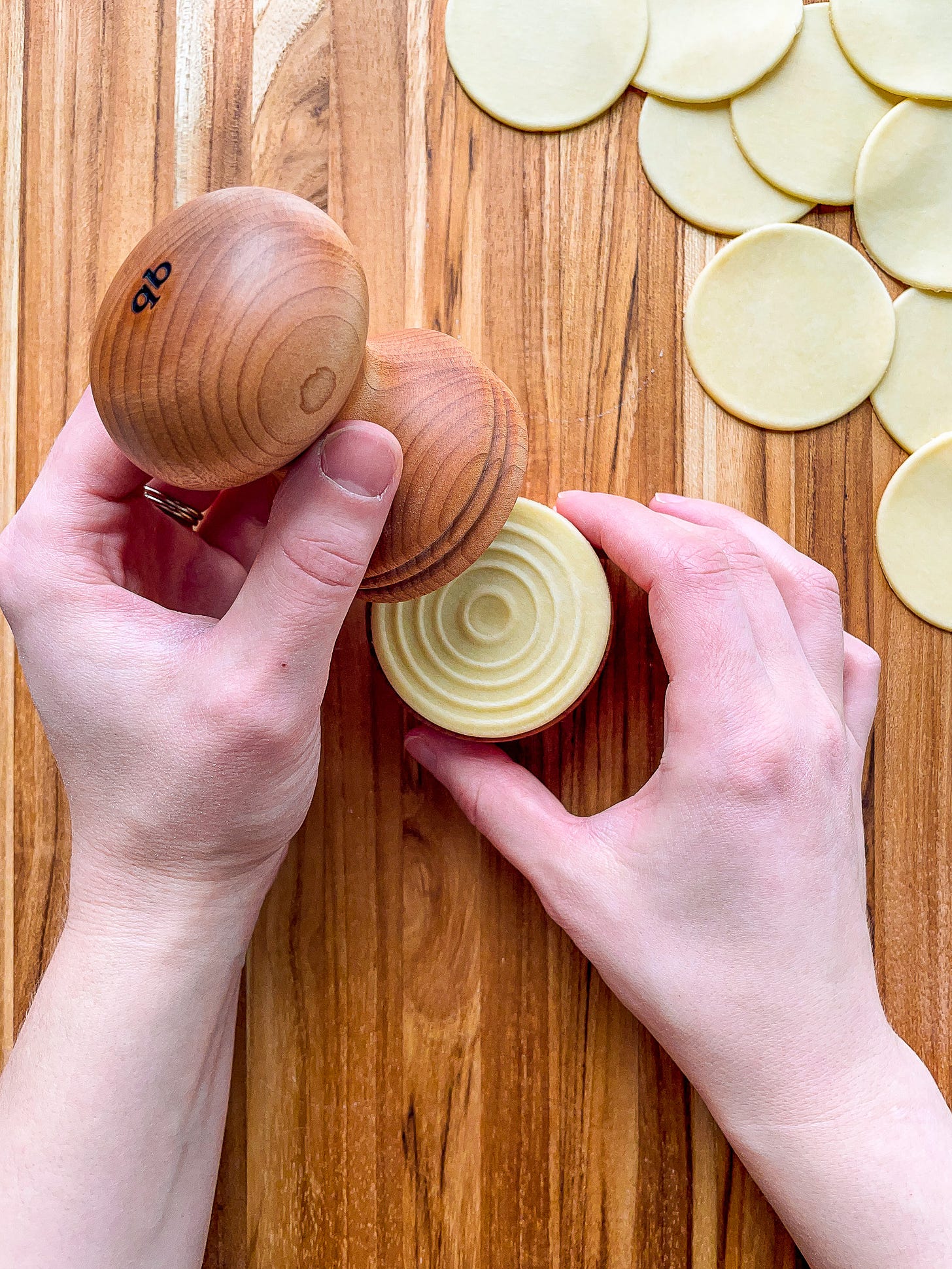
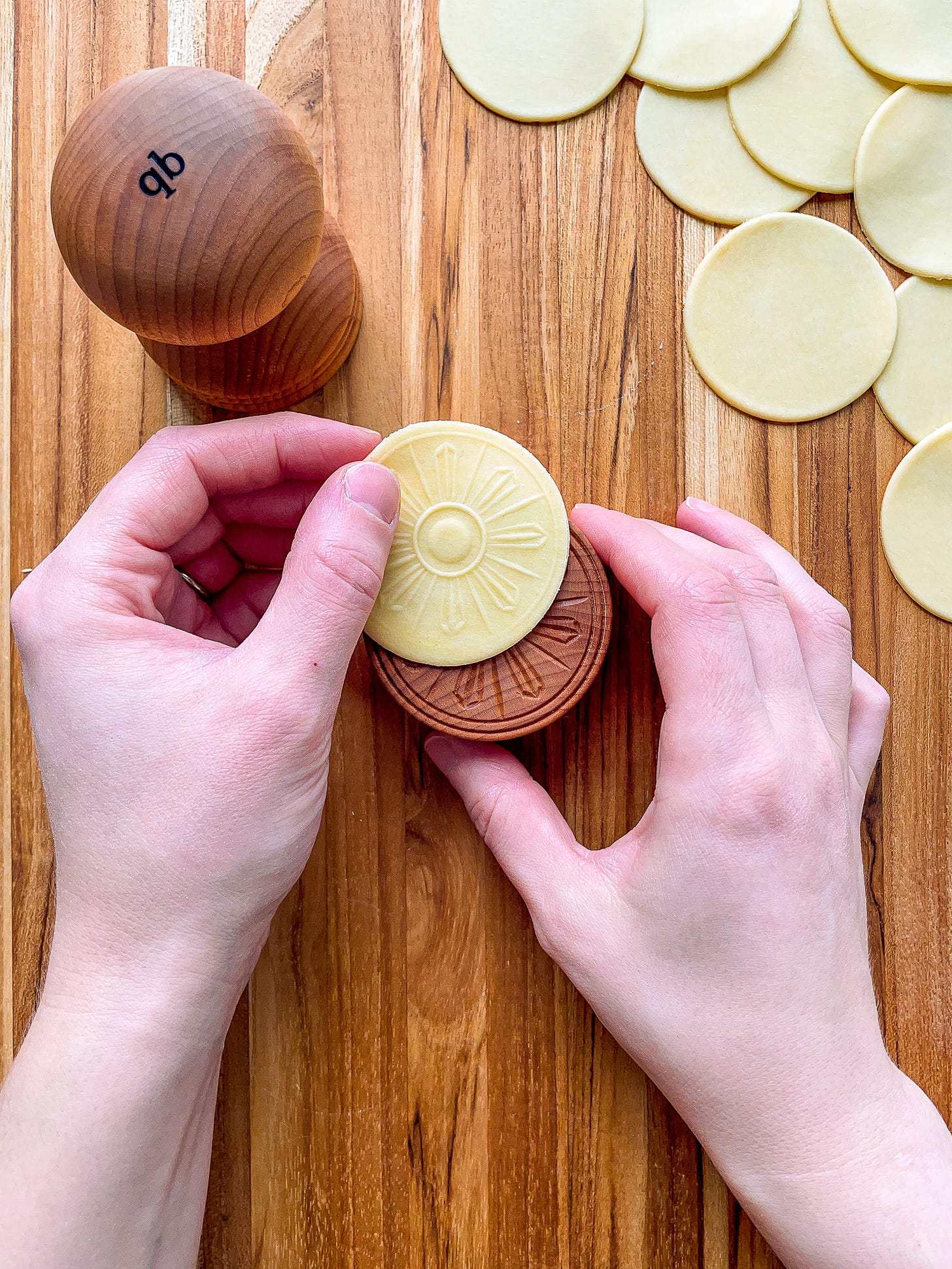
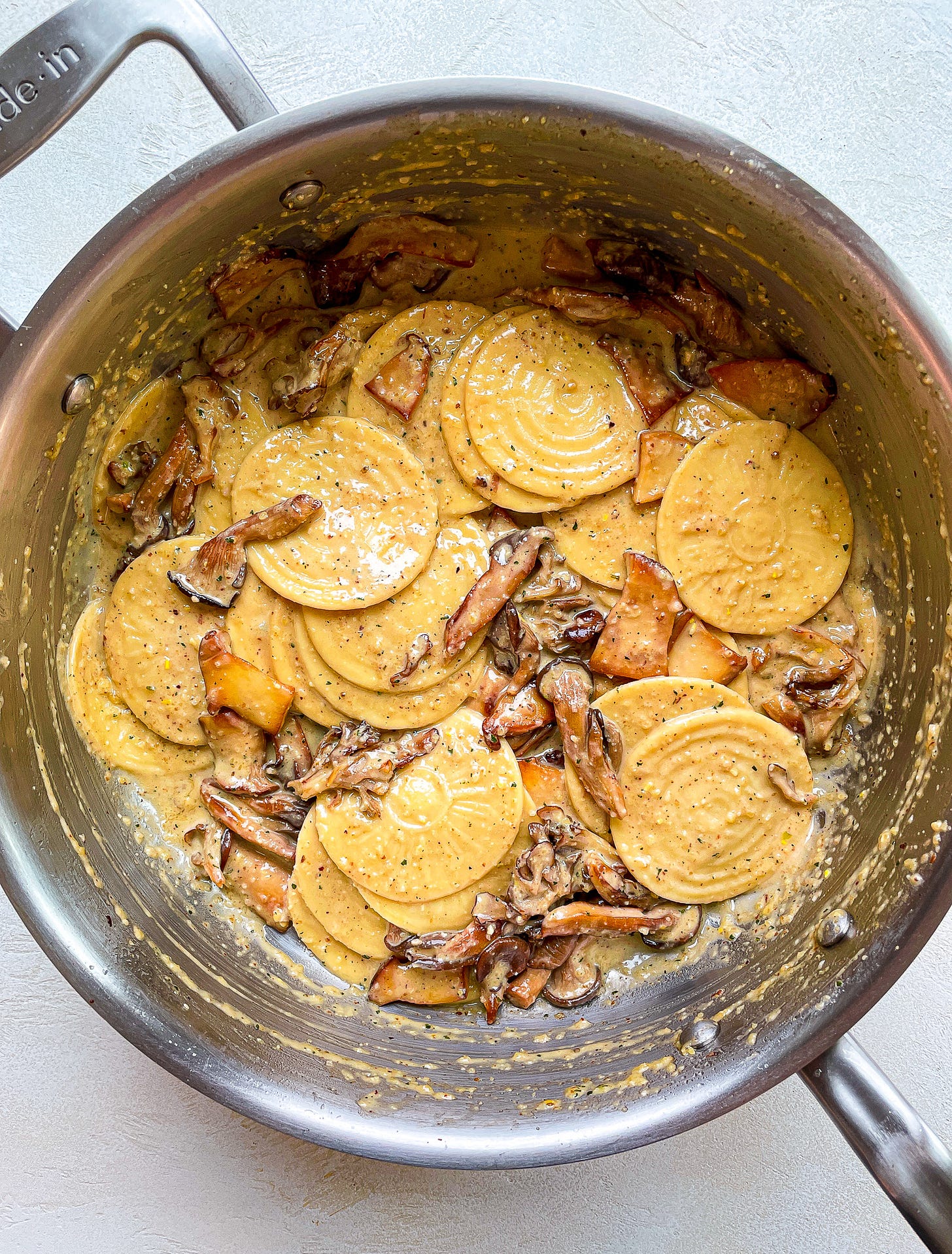
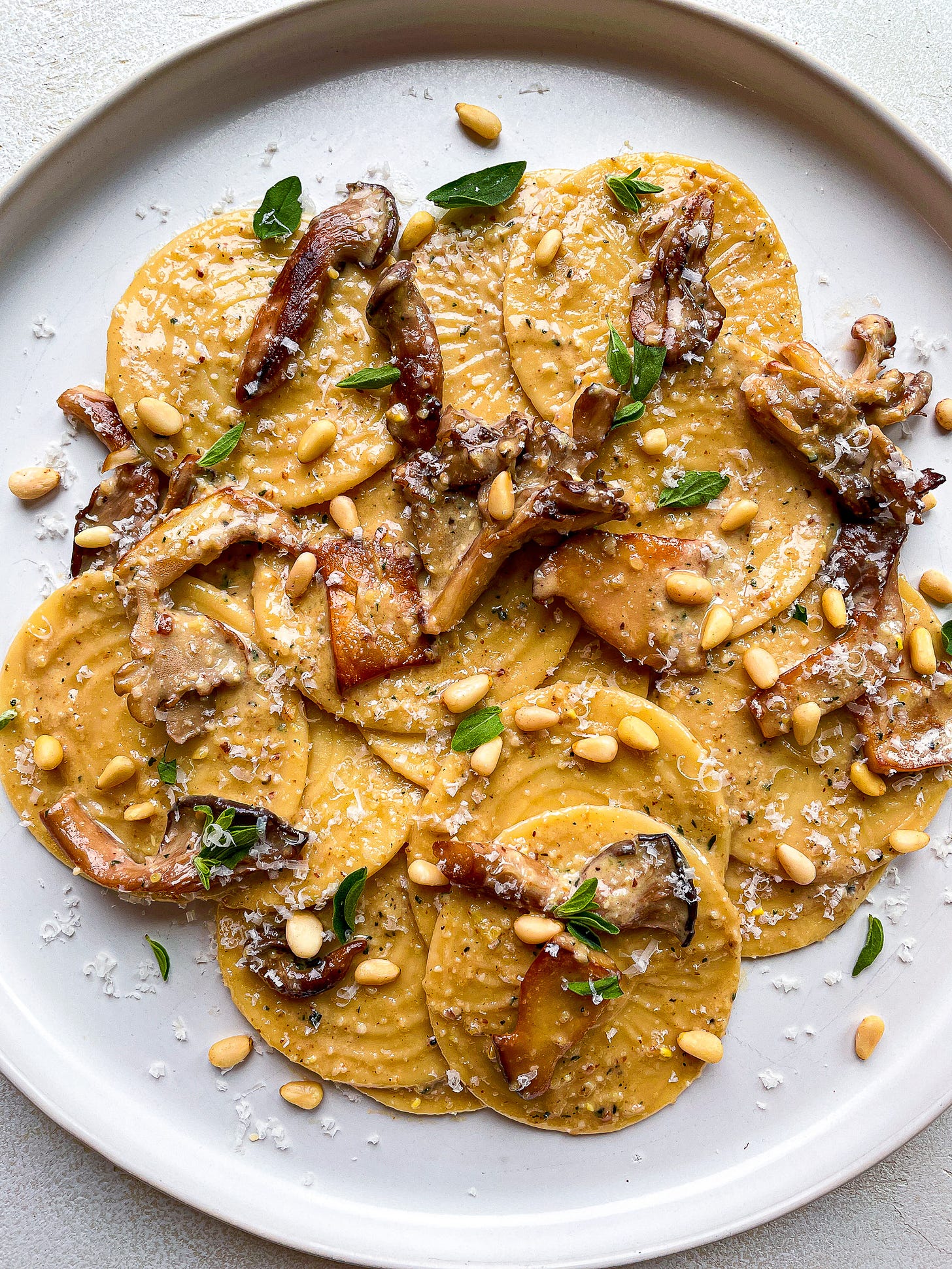
You had me at hello. This is gorgeous, so intriguing and delicious. It's been years since I've been to Liguria, but it's one of my favorite places on earth.